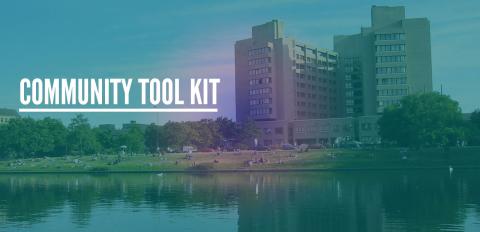
The Democracy Collaborative today introduced the second in a toolkit series Hospitals Aligned for Healthy Communities, to help health systems use their hiring, purchasing and investing power to improve the health and well-being of underserved communities and communities of color.
Inclusive, Local Sourcing: Purchasing for People and Place is the second installment in the series, developed with support from the Robert Wood Johnson Foundation. It provides hospital and health system leaders with the tools they need to harness their everyday business operations to improve community health through procurement and purchasing focused on locally owned businesses.
Nationally, health systems spend more than $340 billion every year on goods and services but many of those dollars do not reach populations facing the greatest health disparities. Less than 2 percent of health system purchasing flows to businesses owned by minorities or women. The Affordable Care Act requires nonprofit hospitals to conduct community health assessments and hospitals are discovering that poverty, hunger, poor housing, and unemployment are surfacing as leading needs. By embracing procurement and sourcing practices that prioritize local residents, health systems can improve the health of the communities they serve in the course of doing business.
That’s where The Democracy Collaborative’s new toolkit series comes in.
Developed by Healthcare Engagement Manager David Zuckerman and Research Associate Katie Parker over a year and through interviews with procurement and purchasing managers and executives, it includes in-depth strategy descriptions, worksheets for getting started, and a series of case studies of health systems that are implementing targeted procurement solutions to increase local wealth and community health. This toolkit focuses on two primary strategies for developing inclusive, local purchasing strategies: creating connections and building capacity. Connection strategies focus on connecting existing local and diverse vendors to contracting opportunities within your institution. Capacity strategies focus on building up the ability of the local business community to meet health system supply chain needs.
In Cleveland, Ohio, University Hospitals is harnessing its purchasing power to revitalize disinvested urban neighborhoods, by encouraging current vendors to move into the City and hire locally. In partnership with it others, it also helped provide more than $1 million to support the development of a network of worker-owned businesses, the Evergreen Cooperatives. These businesses—a commercial laundry, energy efficiency retrofit firm, and urban greenhouse —employ more than 100 residents from low-income neighborhoods and provide goods and services to the health system and other local institutions.
In Houston, Texas, MD Anderson Cancer Center works with existing vendors to facilitate a mentor-protégé program, pairing large and small businesses to build the capacity of local, diverse businesses. In Chicago, Illinois, Chicago Anchors for a Strong Economy (CASE) is leveraging its member hospitals and universities’ purchasing and hiring power to collectively impact Chicagoland neighborhoods and foster inclusive economic growth.
Tyler Norris, vice president of total health partnerships at Kaiser Permanente, based in Oakland, California, endorsed the toolkit, “Given the strong evidence base on the determinants of health and health equity, it is the responsibility of healthcare systems to promote clinical, educational, economic, environmental, and social actions that improve the health of all people. Increasing access to jobs that improve the standard of living for families in the communities we serve, is a key element of improving community health, and The Democracy Collaborative's new resource will be an asset for Kaiser Permanente and the field."
The first toolkit in the series, available for free online, focuses on how hospitals and health systems can create job opportunities in surrounding communities facing high unemployment, and then connect these local residents to career advancement opportunities.
The second toolkit in the series, focuses on how hospitals and health systems can direct their purchasing resources to local contractors to increase community health. “Inclusive, Local Hiring,” and “Inclusive, Local Sourcing” toolkits are available online at: http://hospitaltoolkits.org